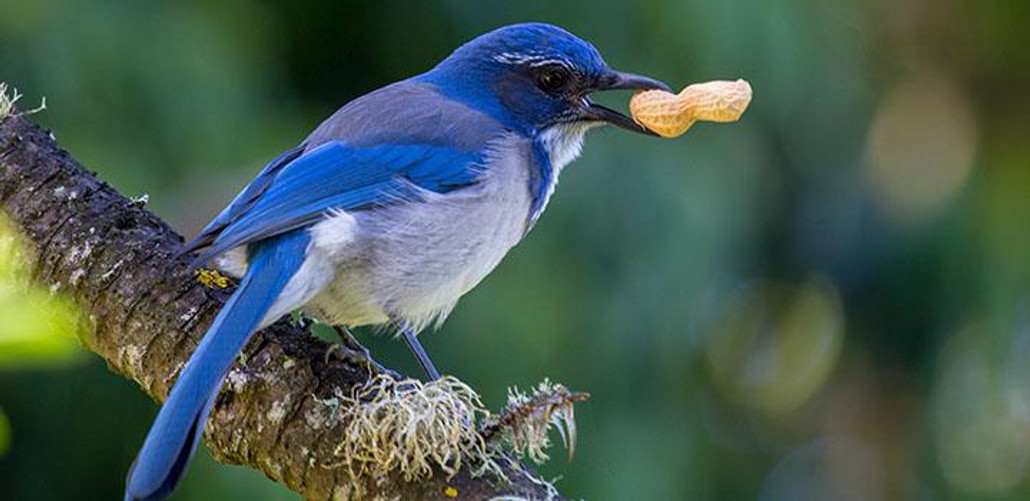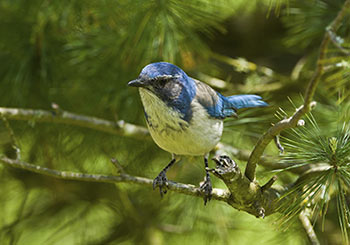
Western Scrub Jay
Posted by Grange Co-op on 18th Dec 2014
Male & Female: Identical with head, wings, and tail sky blue. Grey-brown patch on back. Chin, breast, and belly are dull white to light gray. Throat is streaked gray and white with a blue necklace border. Thin white eyebrow, long pointed bill, blackish cheeks, long tail.
 NESTING:
NESTING:
Both male and female build a cup nest in a shrub or small conifer. A platform of twigs and some moss supports a grass cup lined with fibers, rootlets, and hair. The female incubates 3-6 pale green eggs with dark red markings. Both male and female feed young. One brood per year.
FEEDING:
In summer, largely eats insects, invertebrates, eggs and nestlings of birds, and frogs. In winter, diet is mostly acorns, pine seeds, and fruit. Comes to bird feeders primarily for black oil sunflower and safflower seeds.
RECOMMENDED ROGUE SEED:
Black Oil Sunflower, Grey Striped Sunflower, Safflower, Rogue Chickadee Mix, Rogue Wild Bird Nut Treat, Peanuts in the Shell. Shop Wild Bird Food.
RECOMMENDED FEEDERS:
Any tube seed feeder, hopper feeder, specialty sunflower feeders, peanut feeders, suet feeders. Shop Wild Bird Feeders.
HABITAT:
A common year round resident in western interior valleys and east from Lake County and Klamath County northward to Bend. Variety of open deciduous habitats, including agricultural and residential areas, brushy hillsides, oak woodlands and juniper forests.
OTHER INTERESTING FACTS:
Form long-term pair bonds that live throughout the year on a fixed territory. The young of a pair remain close by for up to a couple years, helping parents raise subsequent brothers and sisters. They can become tame at picnic areas, parks, and feeders. The Scrub Jay caches food by burying it for later consumption. When it’s time to eat the acorns, which form a staple of the winter diet, these intelligent birds often use a rock or concrete slab as an anvil to assist in cracking open the hard shell to get at the edible parts. Because they do not retrieve all of their hidden stashes, many acorns germinate, thus renewing the oak stand and keeping the resident jays supplied for life.
COMPARE TO:
Pinyon Jay is found in Central Oregon and is lighter blue overall.
Stellar’s Jay is same size, but has an all black head and pointed black crest. Gray Jay is gray and white, lacking any of the Scrub Jay’s blue color.
Would you like to attract birds to your yard? We’ve got a great selection of products to help you and your feathered friends get together. Shop our Wild Bird department now.
